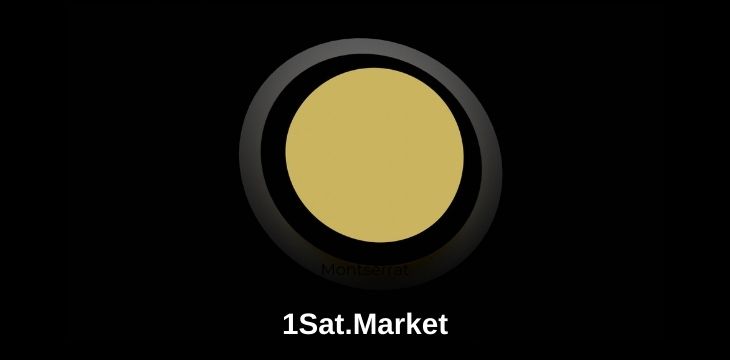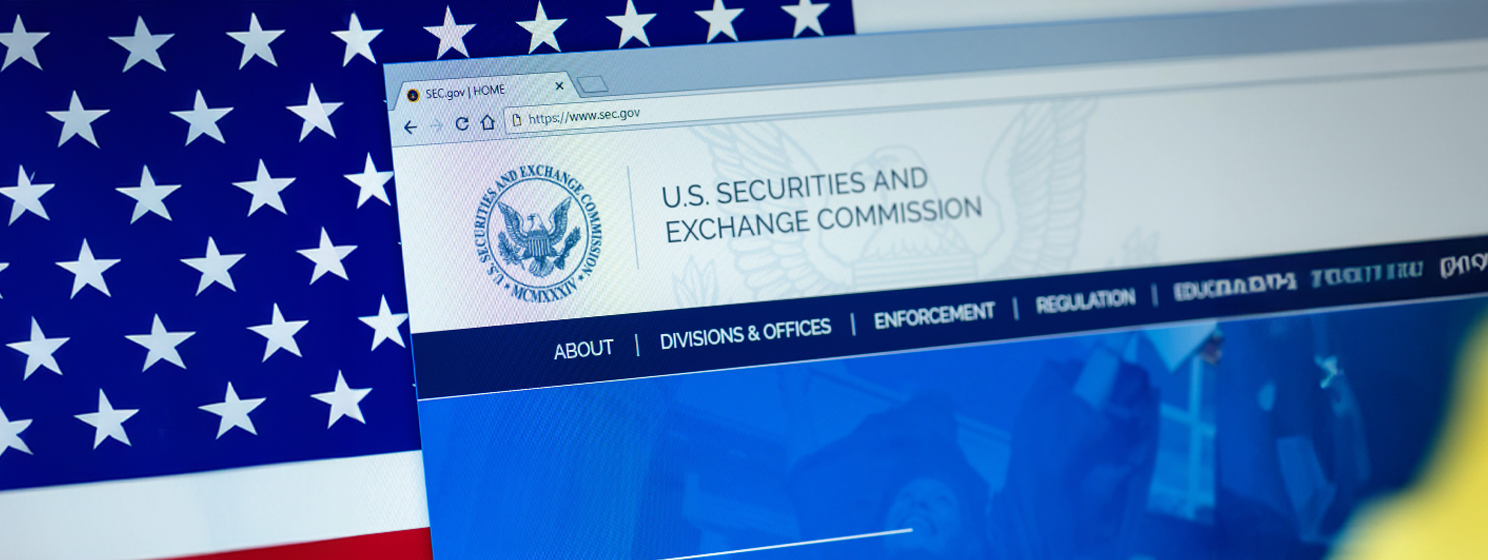
|
Getting your Trinity Audio player ready... |
Why do 1Sat Ordinals exist, and what can they be used for? Can NFTs and fungible tokens ever find legitimate use cases in the real-world economy, or will they forever be associated with speculative trading and price pumps? Is BSV the ideal blockchain for Ordinals? CoinGeek spoke to developer Luke Rohenaz, who, together with David Case, created the 1Sat Ordinals token protocol and the 1Sat.Market trading platform.
1Sat.Market is a BSV and Ordinals token wallet. Formerly known as the 1Sat Ordinals home page, its new name reflects the trading functionality added. There’s also a downloadable POW20 miner where users can use actual proof-of-work (to solve hash puzzles) on their desktop machines to mine new tokens, and users can use its resources to create one-off Ordinals or a whole series of unique tokens.
“Ordinals” are created when additional data is inscribed on the smallest unit of a blockchain’s currency unit, creating a unique digital token. On Bitcoin, that unit is called a “satoshi,” hence the name 1Sat Ordinals.
Although Ordinal tokens were first created for BTC and now exist on several blockchains, the BSV network’s speed and low cost provide several advantages. All relevant token data can be inscribed on a single satoshi and sent in a single transaction.
Cross-chain familiarity with the Ordinals concept has created thousands of “nomads”—that is, users who are more interested in the tokens themselves than the blockchain on which they exist. These nomads are willing to use any blockchain where efficiency is greater, costs and congestion are lower, or where the market is large enough. Not all blockchains share these factors, although it’s foreseeable that the most efficient networks will eventually attract the largest markets.
Going deep to start: Why create a BSV Ordinals marketplace?
The developers put hours of their effort and attention into 1Sat.Market and its community, so the biggest question for Rohenaz is: Why do it? What’s the most compelling thing about blockchain and token technology that keeps them building?
“This is honestly a very deep question,” he said. “Like, why do anything? It’s really to fulfill some purpose, something that is actually going to move the needle. I look at the state of the world, how pervasive lies are and how manipulative society is, how people use flow control against us, like social networks and media outlets.”
While the internet “offers some democracy at least,” it’s definitely no panacea for the 21st century’s ever-increasing levels of censorship and fakery. The BSV blockchain, with its ability to validate and audit many fire hoses of digital information, offers a new shot at decentralized management of systems and neutral curation of content.
Rohenaz had spent years “grinding on these same concepts and ideas” of how Bitcoin and blockchain can achieve these goals and found they all circled around the same center point: an open protocol and storing all data on-chain.
BSV offers these features, while surprisingly few of its blockchain rivals do. 1Sat Ordinals and 1Sat.Market are an opportunity to extend that technology into new areas. It’s about more than creating art token collections and trying to pump their market prices.
“I enjoy it. It’s really fun. I’m super grateful to get up every day and work on this stuff,” he said.
Rohenaz said he first started exploring alternative token formats during his time as CEO and co-founder of TonicPow, the advertising/marketing app that can promote and track links to online content. After RUN tokens lost favor, he found there wasn’t a great alternative to that protocol and wanted something more simple.
Any alternative token format would also need some indexing infrastructure. Together with fellow developer Case, Rohenaz started to brainstorm and sketch some ideas based on BTC’s Ordinals concept, which they realized would work far better on the BSV network. Within a few days, they had the concept for 1Sat Ordinals worked out and created indexers to work with the protocol immediately.
Working without the old limits
The main problem with Ordinals tokens on the BTC blockchain is, well, the BTC network itself. It’s clunky, expensive, and feels like a hack rather than something that should work smoothly. The “protocol wars” and chain splits of 2017-18 left only the most hardcore small-block fanatics responsible for BTC protocol development. Some fairly influential BTC developers regard Ordinals as a malicious attack on their network and have even advocated for miners to ban transactions containing the token data.
BTC devs’ resistance is logical if you suddenly have people trying to mint/send Ordinal transactions on BTC with up to 4MB of token-related data… and that’s also the maximum size of your entire transaction block. It’s probably how 3-inch floppy disk diehards felt in the 00s when they could no longer fit an entire MS Word document on one volume (except that it’s now 2024, and BTC small-blockers are still clinging to their floppies).
The BSV blockchain has no set transaction block sizes and has an unbounded ability to scale. It doesn’t matter how much data is contained in a single 1Sat Ordinals token, making them much more versatile. As well as having more options for file types that may be tokenized, there can be rules like Lock-to-Mint and the POW20 miner that require actual proof-of-work for collectors to receive new tokens. 1Sat Ordinals can also integrate with sCrypt’s smart contracts to explore new use cases that have yet to be discovered.
“That’s the big value proposition for 1Sat Ordinals—it’s all really simple and flexible,” Rohenaz said. “BSV is insanely cheap (and fast).”
Too much traffic, in the form of mass token creation/mining and trading, could potentially overwhelm existing indexers. 1Sat.Market initially had to introduce some “friction” into their POW20 miner by charging a small indexing fee for every token mined. While the BSV mining/processing network could handle any amount of traffic just fine, without proper indexing, it could have become a mess of data for wallet software to constantly sift through.
Rohenaz explained that, while this was more true in the earlier days of 1Sat Ordinals, things have improved greatly as the team has built ever more robust overlay networks. These networks can support true peer-to-peer transactions for 1Sat Ordinals, reducing reliance on indexers overall. There’s always room for more improvement, though, and the developers work daily to introduce new efficiencies and improve the overall experience.
The ‘utility aspect’ of NFTs and fungible tokens
For now, most of the tokens on 1Sat.Market are experiments and collectible series with no “real-economy” purpose (yet!). There are three main types: Ordinals, BSV20, and BSV21 tokens, each with its own list of features and uses.
Ordinals are NFTs, mostly used for art and collectibles, where each token is unique. Creating one-offs or a series of millions where no two tokens are alike (such as Pixel Foxes) is possible. The BSV20 and BSV21 formats are used for fungible tokens, i.e., limited runs of non-unique items. BSV20 issues have a set “ticker” symbol and are great for “first-come, first-served community mints.” BSV21 uses a “token ID” rather than a ticker, and each token series tends to have a single issuer. BSV21 tokens are also better for custom contracts and scripts like Lock-to-Mint, and some BSV21’s are the tokens you can mine with the POW20 miner.
1Sat.Market recently introduced the GEMS token, which users receive as a reward for trading in the market. Other tokens also incentivize community participation in discussion forums. For half a year, the BSV20 “GM” token was given as a reward to people who dropped into 1Sat.Market’s Discord group every day—until its supply ran out. Now, there’s a new BSV21 version of GM that serves the same purpose. Additionally, Discord users receive “😂‚” tokens (yes, its ID is an emoji) if someone laugh-reacts to one of their comments and BSV20 “LOL” tokens if they’re lucky enough to win one of its random drawing for every block on BSV.
Rohenaz, Case, and others are brainstorming new ideas for token-based incentives and rewards and are always open to suggestions from community members.
“The big takeaway is, we’re doing all this fun, goofy stuff, but the point of tokens is to have some utility attached to them,” Rohenaz added.
Any community based around NFT/token creation and trading will inevitably attract scammers and system gamers if it becomes profitable enough to do so. The internet has always been this way—email attracted spammers, websites, and advertisements attracted clickbots, and social networks seem to attract every kind of bad actor or innovative new corruption technology that finds them. When people realize they can create, mint, or trade, a speculative dollar value out of thin air, they will try.
Fair distribution of token rewards “is a big part” of what 1Sat.Market is trying to do, Rohenaz said, and the developers take the issue very seriously. Reputation and longevity as a trustworthy community member help here, and he suggested potentially using ownership of older tokens (with proof of their provenance) to establish users’ standing in the community.
“One thing you can’t fake is history. You can’t go back in time and be one of the first people minting Ordinals.”
Minting, mining, or trading meaningless tokens in the hope you can sell them for a higher dollar value in the future “is a fool’s game,” he said. “In the absence of utility, you’re really just playing musical chairs.”
The ability to create unlimited tokens with no real-world identity attached is like having a stock market with no thresholds. “Where’s the actual value going to come from? There has to be some kind of meritocracy, some utility.”
Rohenaz uses lessons learned from 1Sat.Market to explore creative uses and applications for rewards tokens. Some of these will eventually make their way to other projects like his other creation, the blockchain music platform Jamify.
Artists could create utility NFTs offering fans privileged access to merchandise or at live events. Game developers could build them for beta access to new features. Tokens could be time-limited, but even after they expire, they still have value as collectibles: you can prove you were a fan early in an artist’s career and even earn rewards for that. There could be secondary markets for expired utility NFTs, and the attention could help an artist gain new followers.
1Sat.Market (and its Discord group) are great places for anyone interested in finding these new use cases, having a say in where 1Sat Ordinals technology goes, or who just happens to enjoy playing around with digital token technology (and how well it works on BSV). It might be experimental and hobby-ish for now, but that means there’s still time to establish your credit as an OG—something that could somehow become valuable in the future.
Watch: 1Sat Ordinals on Bitcoin

 11-21-2024
11-21-2024


